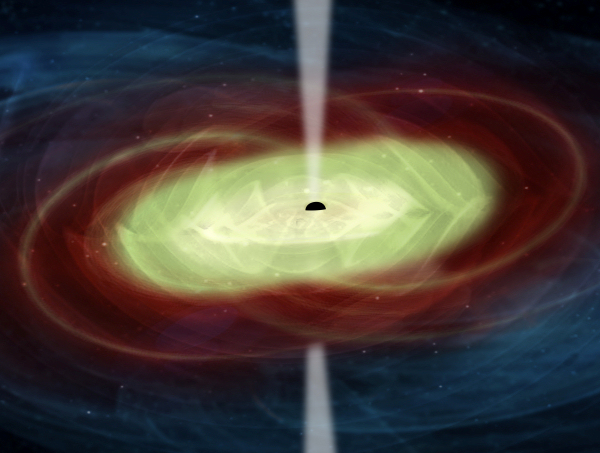A unique experiment to explore black holes
2019-05-23Supermassive black holes, with masses ranging from millions to billions of Suns, sit at the core of most massive galaxies across the Universe. We don't know exactly how these huge, enormously dense objects took shape, nor what triggers a fraction of them to start devouring the surrounding matter at extremely intense rates, radiating copiously across the electromagnetic spectrum and turning their host galaxies into 'active galactic nuclei'.

Tackling these open questions in modern astrophysics is among the main goals of two future missions in ESA's space science programme: Athena, the Advanced Telescope for High-ENergy Astrophysics, and LISA, the Laser Interferometer Space Antenna. Currently in the study phase, both missions are scheduled for launch in the early 2030s.
"Athena and LISA are both outstanding missions set to make breakthroughs in many areas of astrophysics," says Günther Hasinger, ESA Director of Science.
"But there is one extremely exciting experiment that we could only perform if both missions are operational at the same time for at least a few years: bringing sound to the 'cosmic movies' by observing the merger of supermassive black holes both in X-rays and gravitational waves.
See:http://sci.esa.int/astrophysics/61375-a-unique-experiment-to-explore-black-holes/

 Search
Search

